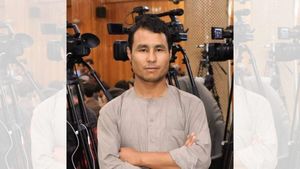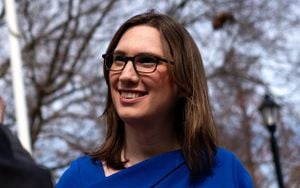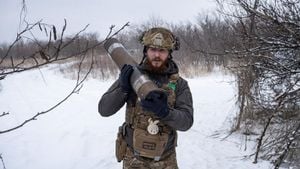Boeing's Starliner spacecraft has concluded its tumultuous mission by landing safely on Earth, but the spacecraft returned without its two astronauts on board. The capsule's uncrewed descent, which took place early Saturday morning, caps off what has become one of the most protracted and eventful journeys for NASA and Boeing's partnership on human spaceflight.
Launched on June 5, 2024, from Kennedy Space Center, the Starliner was initially intended to serve as the mode of transportation for NASA astronauts Suni Williams and Butch Wilmore on their return from the International Space Station (ISS). This voyage was meant to last about eight days. Instead, it ended up stretching over three months, heavily marred by technical problems, including thruster malfunctions and helium leaks. These concerns led NASA to deem it too dangerous to bring the astronauts back on Starliner.
At approximately 4:01 AM GMT Saturday, the Starliner landed softly at the White Sands Missile Range after completing its descent, which included the deployment of parachutes and the use of airbags to cushion the landing. Ground teams reported hearing sonic booms as it re-entered the atmosphere, anxiously watching as it endured the fiery return through temperatures reaching about 3,000 degrees Fahrenheit (1,650 degrees Celsius). NASA's Commercial Crew Program manager, Steve Stich, praised the landing as "a bull's-eye landing" and confirmed the success of the mission's autonomous systems during the capsule's final phase.
Despite the successful landing, all was not well with the Starliner mission. The decision to return the capsule uncrewed followed extensive assessments by both Boeing and NASA amid growing uncertainties about the spacecraft's operational reliability. "NASA's commitment to safety is our core value and our North Star," stated NASA Administrator Bill Nelson. After repeated assessments, the agency opted to have the astronauts remain on the ISS until February 2025, flying back instead on SpaceX's Crew Dragon spacecraft, which has consistently shown reliability since its debut.
The Starliner's bumpy ride up to the ISS was marked by consecutive delays and malfunctions. Just before the launch, engineers had identified issues including leaking helium from the service module and thrust irregularities. Such issues delayed previous launch attempts and also triggered serious concerns about the spacecraft's ability to safely return the astronauts.
Much of this mission's drama echoed the challenges faced during the Starliner's earlier flights. Starliner made headlines back during its first uncrewed flight test back in December 2019 when software problems prevented it from docking at the ISS. A subsequent test mission had taken place in May 2022, where, after successfully docking, various safety issues, including the discovery of flammable tape within the capsule, surfaced, leading to even more delays.
When asked about the unexpected technical issues, Steve Stich commented, "NASA could not get comfortable with the thruster situation and went with SpaceX." NASA's choice to utilize SpaceX instead reflected the agency's growing confidence in SpaceX's Crew Dragon vehicles. The Crew Dragon has completed numerous flights to the ISS since 2020, firmly establishing its reputation as a reliable transport system for astronauts.
Throughout the three months aboard the ISS, astronauts Williams and Wilmore continued their work, contributing to various experiments and assisting with repairs, keeping busy as they awaited their ride back home. Their excitement over the Starliner's launch rapidly shifted to concern as problems began to mount.
The relationship between NASA and Boeing has faced scrutiny as Boeing navigates the choppy waters of public perception and its future standing as one of the principal means of transporting astronauts. Since the US retired the space shuttle program, both Boeing and SpaceX have been tasked with providing reliable access to the ISS.
While the Starliner mission has concluded with the capsule's safely touchdown, the road to certification remains fraught with challenges. NASA is currently evaluating all aspects of the mission, which will impact Boeing's timeline for eventual crewed missions. Following the analysis, Boeing's path forward will be determined.
The goal is for both Boeing and SpaceX to provide alternating crew rotations to the ISS until the station's retirement projected for 2030. Boeing intends to push forward with the Starliner program and is already initiating repairs and modifications stemming from insights gained during this mission.
Boeing officials expressed support for NASA's decision-making throughout the mission, recognizing the importance of safety and reliability. Mark Nappi, Boeing's vice president and program manager, stated, "We will review the data and determine the next steps for the program." The company acknowledges the need to address the technical flaws encountered during the flight to regain confidence from NASA and the broader audience.
While for now, Starliner’s future hinges on upcoming evaluations, its recent successful landing provides Boeing with at least a glimmer of hope. A smooth, uneventful return is seen as fundamental not just for restoring some pride to its spacecraft division, but also as it continues to chase acceptance for future crewed missions. The commitment to return astronauts to American-made spacecraft safely remains the crux of their enduring partnership with NASA.
The culmination of this flight test ends on what is hoped to be the first step back toward restoring pride to the Boeing name within aerospace. The world will now look forward to what insights will be extracted from this mission, and how soon the next Starliner flight can take place with astronauts onboard.



